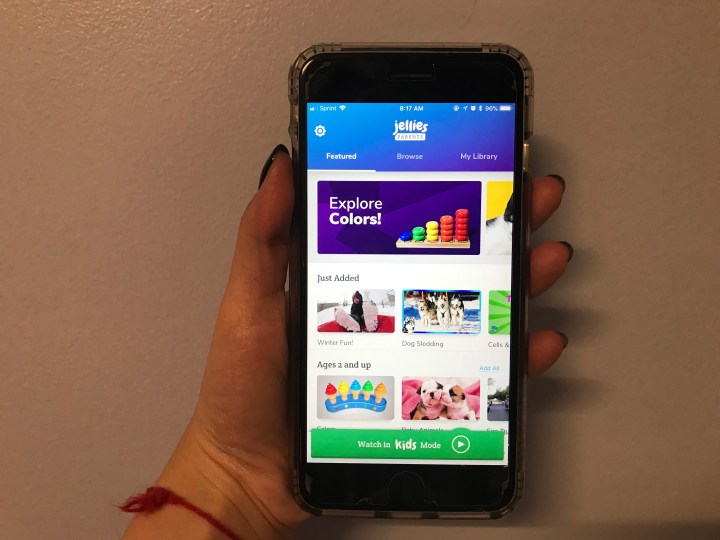
The internet can be a scary place, even for adults. But more importantly, children have infinite access to all types of content. All it takes is a few clicks to land on a website, photo, or video that isn’t safe. This week, we have an app that will make it much easier for both parents and children of all ages to watch kid-friendly videos without having to worry.
Jellies — Safe Kids Videos is an app available for iOS that provides a safer way to watch YouTube videos on a mobile device. With YouTube receiving backlash lately for its disturbing content aimed specifically at children, parents are having to tighten the reins on how their kids are using the internet.
For parents, Jellies allows you to curate your child’s library based on the videos available through the app. There’s over 1,000 handpicked videos spanning across over 100 different topics — from arts and crafts to animals, and more. New playlists are also added each week for fresh content.
When downloading the app, there’s a free 30-day trial you can sign up for, and after that you’ll be charged $5 per month to use it. While using the trial, I had full access to all of the different videos and was able to curate my own library with all the different videos offered.
The interface is easy to navigate, with three different tabs separated into featured videos — also known as playlists, a section for browsing, and your library. The videos are also separated neatly by age, from two and up, to four and up, all the way up to age eight and up. By scrolling through the gallery of different topics within the age brackets, you can either add all of the videos or choose specific ones.

Browsing through the different playlists on the app is super simple, but I do wish there was an option to preview at least some of the videos before adding them to the library. Instead, you’re presented with a screenshot from one of the videos featured within that playlist, and you can’t watch any of them until you’re in “Kids Mode.”

Once all of the videos are chosen and ready for your kids to watch, you can then enter “Kids Mode” by tapping on the big green button at the bottom, which is always readily available regardless of what section of the app you’re in. In Kids Mode, you can tap on a specific playlist and will be brought to all of the different featured videos. You can also switch from video to video even while you’re in watch mode.
When going through all of the different type of content provided, I noticed that it all resembles a children’s TV channel like Nickelodeon or Disney Channel. It seems that nowadays, kids have become more interested in YouTube celebrities and unboxing videos than cartoons or more educational videos.
As part of Jellies’ mission statement, it specifically mentions that videos with influencers can have a negative impact on children. The same also goes for inappropriate ads, which you thankfully don’t have to worry about while using Jellies. Each video plays straight through to the next one, without any interruption.

If you’re worried about your kids being able to go in and change the curated content, Jellies uses a secure system. Kids won’t be able to access anything outside of “Kids Mode” unless they’re able to solve a multiplication problem. If they try and unlock that specific mode, a pop-up window appears asking to solve the equation in order to move forward.
Jellies is for parents who don’t want to risk the inappropriate content slipping through the cracks. Instead, they have full control and the comfort of knowing the only videos that live on the app are always appropriate. While you do need to pay a subscription fee after a month, it’s a small price to pay knowing your children won’t be exposed to dangerous ads.
Editors' Recommendations
- This one thing could make iOS 18 the best iPhone update in years
- 10 reasons you should buy an iPhone in 2024
- I found 16 new widgets for iOS 17 that you have to try
- YouTube TV just got even better on iPhones and iPads
- 8 iPhone browser apps you should use instead of Safari





